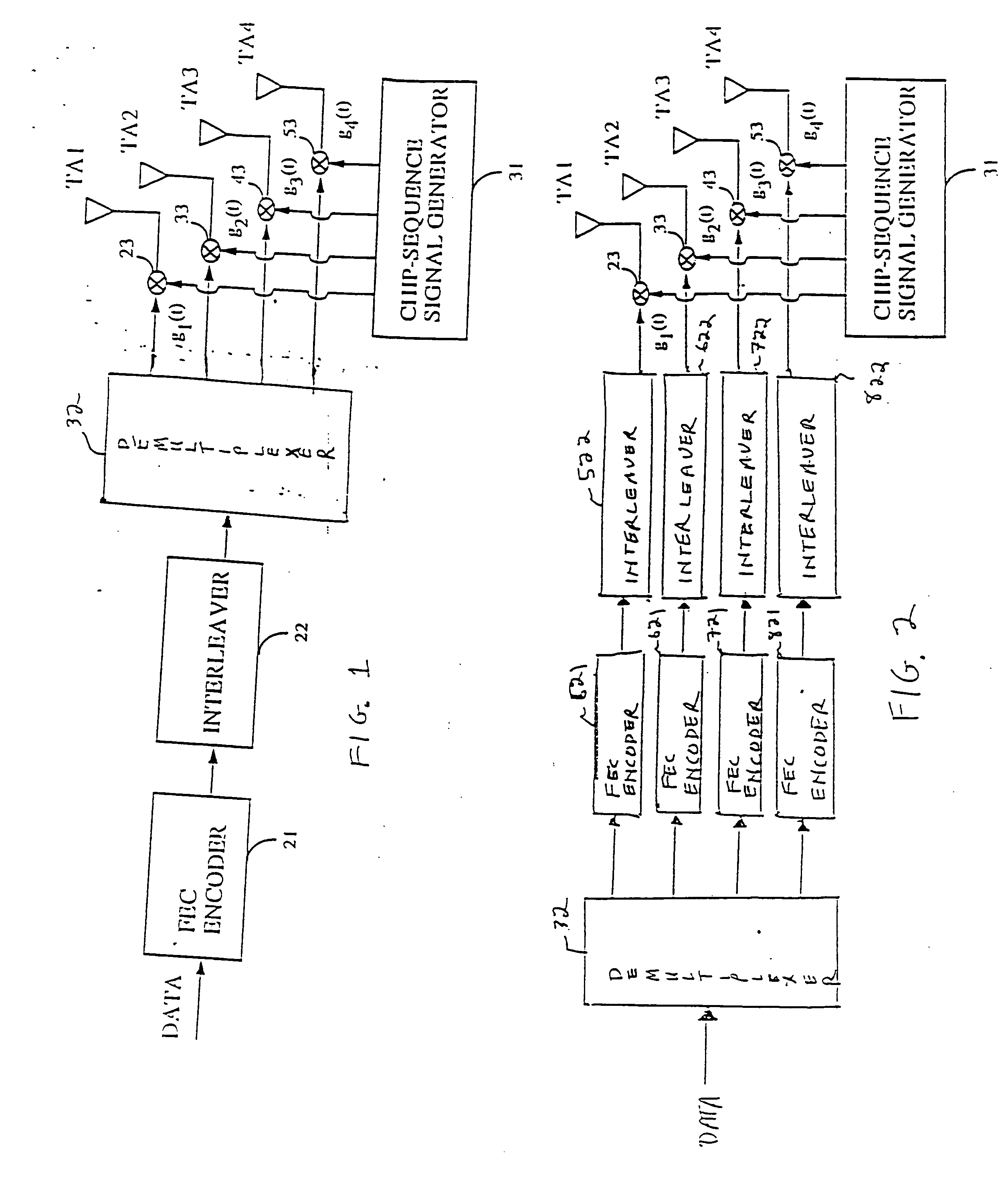Multiple-input multiple-output (MIMO) spread-spectrum system and method
a spread-spectrum, multi-input technology, applied in diversity/multi-antenna systems, multiplex communication, polarisation/directional diversity, etc., can solve problems such as effectively destroying one source of data, and achieve the effect of reducing the effects of shadowing and multipath
- Summary
- Abstract
- Description
- Claims
- Application Information
AI Technical Summary
Benefits of technology
Problems solved by technology
Method used
Image
Examples
Embodiment Construction
[0030] Reference now is made in detail to the present preferred embodiments of the invention, examples of which are illustrated in the accompanying drawings, wherein like reference numerals indicate like elements throughout the several views.
[0031] The present invention provides a novel approach for reducing the effect of fading due to shadowing and multipath, through the use of multiple antennas at the terminal and also at the base station, as well as a single RAKE / maximal ratio combiner to combine all time and space signals. Previous solutions have assumed multiple antennas at the base, where space diversity. is then applied. Also, each antenna receiver has an individual RAKE. Placing multiple antennas at the terminal, however, can result in a significant improvement in system performance. The use of maximal ratio combining, RAKE and erasure decoding further enhance system performance.
[0032] As illustratively shown in FIGS. 1-6, the present invention broadly includes an antenna ...
PUM
 Login to View More
Login to View More Abstract
Description
Claims
Application Information
 Login to View More
Login to View More - R&D
- Intellectual Property
- Life Sciences
- Materials
- Tech Scout
- Unparalleled Data Quality
- Higher Quality Content
- 60% Fewer Hallucinations
Browse by: Latest US Patents, China's latest patents, Technical Efficacy Thesaurus, Application Domain, Technology Topic, Popular Technical Reports.
© 2025 PatSnap. All rights reserved.Legal|Privacy policy|Modern Slavery Act Transparency Statement|Sitemap|About US| Contact US: help@patsnap.com



